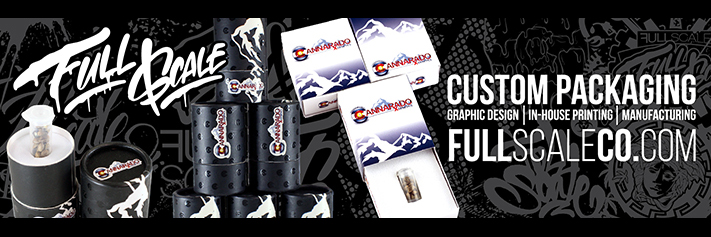WrinkledNugSack
Well-known member
There are many ways to start a worm bin and I'm certain there are better ways than this, but what I do is relatively trouble free, easy, and cheap.
I got a 20L food-grade pail(s) from Lee Valley Tools when they had them on sale and what LVT calls a Wash Pail Insert (also on sale.) You can buy a similar item in Canadian Tire, they call them parts washing, something -or-others.
Get yourself some coconut matting. Place the insert on the matting to mark out, then cut out, a piece large enough to cover the top of the insert. (I would cut out a 1/2 dozen or so while I was at it, but that's just me.) While your at it, flip the pail over and mark out a circle the size of the top of the pail... BUT when you cut this piece out, you'll want it a bit smaller than the top of the pail itself, so cut 10-15mm inside the line you marked out. (You will only need one of these)
Place the insert and the matting in the pail, then add your desired soil. Red wiggler worms love fresh brown cardboard so I cut the bottom portion off of a pizza box, chop it up and mix the chunks into the soil mix that I use. (Cut the squares about 25-40mm square; the size doesn't matter what-so-ever.) (The pizza boxes are the ones that you can get from the grocery store that you take home and cook yourself... plain brown cardboard, no inks or shiny outer coverings.
Place the soil into the bucket leaving it a little way from the top. (7cm's-ish)
"I find" that the red wrigglers like avocado cut in 1/2 then placed wound side down, mangos cut in 1/2 length wise then placed wound side down, but they LOVE bananas that have been left to blacken in the refrigerator, then sliced the length of the banana when it is resting on a cutting board... also place it wound side down in the bucket... then finish filling the pail with soil; basically you're just covering the banana as the worms don't like the light. ONLY one 1/2 of a piece of fruit per pail at a time!
Once I have this done, I water the media and place the coconut matting that I cut for the top of the pail over the finished assembly.
The Wash Pail Insert and matting keeps everything off of the bottom of the pail (for water and air).
The matting on the top is just to block a little light and allow the pail to breath.
The matting on the top also allows you to sprinkle a little water over the entire thing and trickle down while you are watering the plants.
I leave this pail in the tent. The matting and soil cover over the food is enough to block the light for the worms to thrive.
It takes a bit of attention at first to have the moisture content right, and to get the feeding right. (Less food is more in my experience.) IF you have worms crawling out of the pail, it is always because you have over-fed them; otherwise they will never try to leave.
I also have worms living in plain old 20l buckets without the matting or insert, but they are "living" not "thriving"... these buckets tend to be the ones that I intend on using for my next grow, so I don't want heaps of worms transferred into the fabric pots. If you do a google search for red wriggler eggs, there are pictures of what they look like and you can gauge your success by the amount of eggs you find when moving the soil about.
"I" tend to dump all of the pails out every 6 months and reset everything... if I have too many worms in my grow tent bin, I'll transfer some to a pail that is lacking. This is why I said to cut out more than one matt for the insert... in 6 months, it is almost non-existent and will need replacing.
It is possible to over water the pots, so for the first attempt it might be worth trying to have a tap on the bottom some how. My very first attempt I did this by using two pails, one with a 1/2" hole in the bottom (along with a matt), then set this pail inside the other... so if there was too much water it would drain to the lower pail... once I got my understanding of the moisture content down, I no longer use this approach; I just have them in plain old pails with my media. Their numbers rise and fall, but I don't care.
Important notes here for the squeamish:, They (pails, worms, the whole she-bang) don't smell, even with rotting food in them. They are super low maintenance. And are self sustaining provided that you give them a little food periodically and a sprinkle of water when needed. The worms actually feed on the bio-sludge that comes off of the decaying fruit, so don't hesitate to give them food that is mildly disgusting to you... they have no table manners.
Should you uncover a banana a week or so after it was placed into the pail, you'd find a clump of worms, some eating, others mating... they have a regular old Roman orgy going on when they are happy and healthy.
Lastly, I was always concerned with introducing pests into my grow by having worm bins. (At the very least fruit flies) When I bring fruit home, I always wash it before putting it in the refrigerator, but I have never had an issue of the dreaded introduction I feared. I suppose a person could sprinkle a covering (dusting) of diatomaceous earth over the top of the media just as added insurance, but I never do.
This would be a great project for a younger child.
I got a 20L food-grade pail(s) from Lee Valley Tools when they had them on sale and what LVT calls a Wash Pail Insert (also on sale.) You can buy a similar item in Canadian Tire, they call them parts washing, something -or-others.
Get yourself some coconut matting. Place the insert on the matting to mark out, then cut out, a piece large enough to cover the top of the insert. (I would cut out a 1/2 dozen or so while I was at it, but that's just me.) While your at it, flip the pail over and mark out a circle the size of the top of the pail... BUT when you cut this piece out, you'll want it a bit smaller than the top of the pail itself, so cut 10-15mm inside the line you marked out. (You will only need one of these)
Place the insert and the matting in the pail, then add your desired soil. Red wiggler worms love fresh brown cardboard so I cut the bottom portion off of a pizza box, chop it up and mix the chunks into the soil mix that I use. (Cut the squares about 25-40mm square; the size doesn't matter what-so-ever.) (The pizza boxes are the ones that you can get from the grocery store that you take home and cook yourself... plain brown cardboard, no inks or shiny outer coverings.
Place the soil into the bucket leaving it a little way from the top. (7cm's-ish)
"I find" that the red wrigglers like avocado cut in 1/2 then placed wound side down, mangos cut in 1/2 length wise then placed wound side down, but they LOVE bananas that have been left to blacken in the refrigerator, then sliced the length of the banana when it is resting on a cutting board... also place it wound side down in the bucket... then finish filling the pail with soil; basically you're just covering the banana as the worms don't like the light. ONLY one 1/2 of a piece of fruit per pail at a time!
Once I have this done, I water the media and place the coconut matting that I cut for the top of the pail over the finished assembly.
The Wash Pail Insert and matting keeps everything off of the bottom of the pail (for water and air).
The matting on the top is just to block a little light and allow the pail to breath.
The matting on the top also allows you to sprinkle a little water over the entire thing and trickle down while you are watering the plants.
I leave this pail in the tent. The matting and soil cover over the food is enough to block the light for the worms to thrive.
It takes a bit of attention at first to have the moisture content right, and to get the feeding right. (Less food is more in my experience.) IF you have worms crawling out of the pail, it is always because you have over-fed them; otherwise they will never try to leave.
I also have worms living in plain old 20l buckets without the matting or insert, but they are "living" not "thriving"... these buckets tend to be the ones that I intend on using for my next grow, so I don't want heaps of worms transferred into the fabric pots. If you do a google search for red wriggler eggs, there are pictures of what they look like and you can gauge your success by the amount of eggs you find when moving the soil about.
"I" tend to dump all of the pails out every 6 months and reset everything... if I have too many worms in my grow tent bin, I'll transfer some to a pail that is lacking. This is why I said to cut out more than one matt for the insert... in 6 months, it is almost non-existent and will need replacing.
It is possible to over water the pots, so for the first attempt it might be worth trying to have a tap on the bottom some how. My very first attempt I did this by using two pails, one with a 1/2" hole in the bottom (along with a matt), then set this pail inside the other... so if there was too much water it would drain to the lower pail... once I got my understanding of the moisture content down, I no longer use this approach; I just have them in plain old pails with my media. Their numbers rise and fall, but I don't care.
Important notes here for the squeamish:, They (pails, worms, the whole she-bang) don't smell, even with rotting food in them. They are super low maintenance. And are self sustaining provided that you give them a little food periodically and a sprinkle of water when needed. The worms actually feed on the bio-sludge that comes off of the decaying fruit, so don't hesitate to give them food that is mildly disgusting to you... they have no table manners.
Should you uncover a banana a week or so after it was placed into the pail, you'd find a clump of worms, some eating, others mating... they have a regular old Roman orgy going on when they are happy and healthy.
Lastly, I was always concerned with introducing pests into my grow by having worm bins. (At the very least fruit flies) When I bring fruit home, I always wash it before putting it in the refrigerator, but I have never had an issue of the dreaded introduction I feared. I suppose a person could sprinkle a covering (dusting) of diatomaceous earth over the top of the media just as added insurance, but I never do.
This would be a great project for a younger child.
















